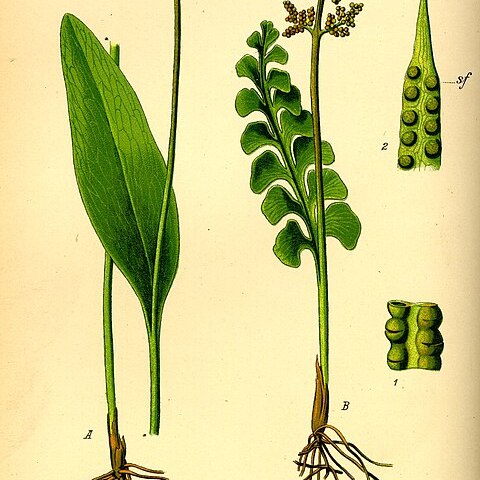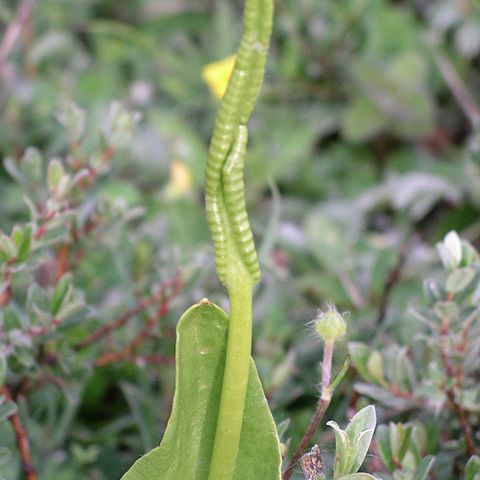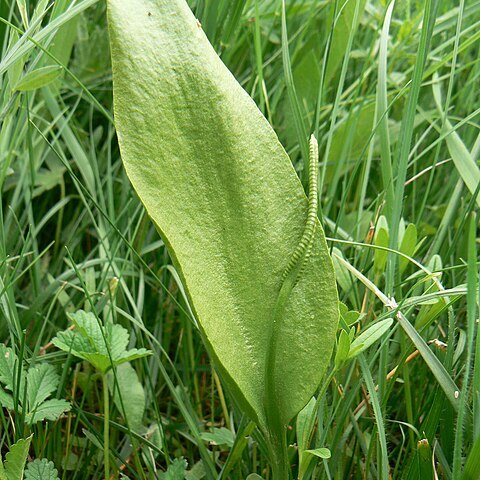Plants perennials, terrestrial or epiphytic. Roots lacking root hairs, unbranched or with a few narrow lateral branches, in 1 species dichotomously branched. Stems simple, unbranched, upright, with eustelic vascular tissue. Leaf bases dilated, clasping, forming sheath, open or fused, surrounding successive leaf primordia; primordia glabrous or with long, uniseriate hairs. Leaves 1(--2) per stem, with common stalk divided into sterile, laminate, photosynthetic portion (trophophore) and fertile, spore-bearing portion (sporophore). Trophophore blades compound to simple, rarely absent, veins anastomosing or free, pinnate, or arranged like ribs of fan. Indument absent or of widely scattered, long, uniseriate hairs, especially on petioles and rachises. Sporophores pinnately branched or simple. Sporangia exposed or embedded, 0.5--1.5 mm diam., thick-walled, with thousands of spores. Spores all 1 kind, trilete, thick-walled, surface rugate, tuberculate, baculate (with projecting rods usually higher than wide), sometimes joined in delicate network, mostly with ± warty surface. Gametophytes not green, usually fleshy, round or linear, subterranean, mycorrhizal.
Terrestrial or epiphytic homosporous ferns. Rhizome prostrate or erect, rarely branched, glabrous or scaly at apex, bearing a few or numerous wiry or fleshy roots which sometimes produce vegetative buds. Fronds non-circinnate, erect or folded, simple, pinnate to ±palmate or dichotomous, glabrous or sparsely pubescent, consisting of a sterile lamina and a stalked, sporophore sharing a common stipe, with an expanded membranous stipular basal sheath. Sterile lamina sessile or petiolate, simple or pinnately compound, occasionally absent, fleshy, rarely coriaceous; venation free or anastomosing. Sporophore undivided or pinnately compound, raised on a stipe arising from the base or below the sterile lamina, or rarely partially fused to it. Sporangia large, free or coalescent and arranged in 2 rows, sessile or subsessile, clustered along branches, lacking an annulus. Spores numerous, thick-walled, tetrahedral or bilateral. Gametophyte subterranean, lacking chlorophyll, mycorrhizal, fleshy, irregularly elongate, occasionally subspherical, sometimes branched.
Herbs, mainly terrestrial but some epiphytic, usually small and fleshy. Rhizome globose to elongate; roots lacking root hairs, mycorrhizal. Leaves few to solitary, simple or divided, sterile segments foliaceous, fertile segments terminal, spike-like, petiolate, simple or compound; both sterile and fertile segments arising from a common stipe, glabrous or hairy
Leaves few or solitary, simple (Ophioglossum) or decompound (Botrychium) with a sterile foliaceous segment and fertile non–foliaceous dorsal segment, arising from a common stipe; fertile segments simple, linear (Ophioglossum), or compound
Terrestrial or epiphytic herbs with globose, subglobose or elongated rhizomes
Terrestrial, rarely epiphytic (none in W.Africa) herbs



